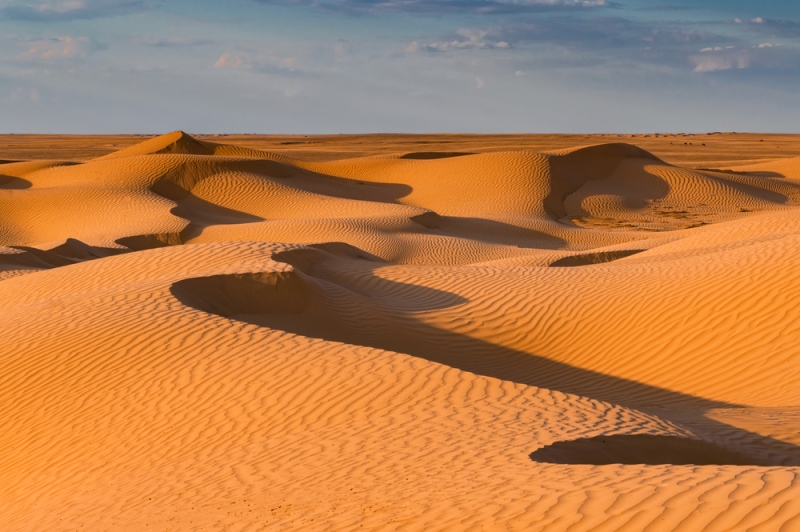
Kalmykia is a small but very colorful region in the south of Russia. Many travelers visit its capital, Elista, during visits to the Astrakhan or Volgograd regions. Endless steppes, Buddhist shrines and incredible hospitality of local residents – we have collected the main reasons to visit Kalmykia for at least a couple of days.
1. Get to know the Buddhist culture
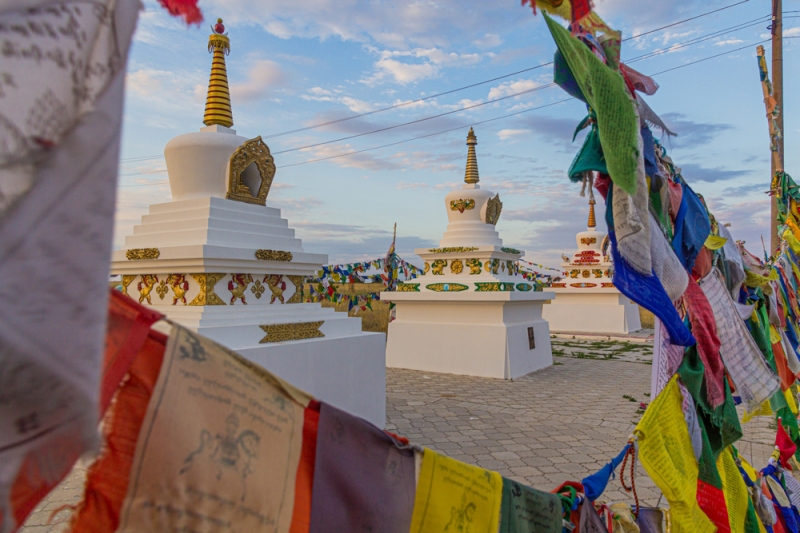
Kalmykia is not the only region in Russia where the majority of the population professes Buddhism. However, all the rest – Buryatia, Tuva, Altai and the Trans-Baikal Territory – are located in the Asian part of Russia, which makes Kalmykia the only Buddhist republic in all of Europe! There are several important shrines for Buddhists here, for example, the Golden Abode of Buddha Shakyamuni, a huge snow-white building with golden roofs. Along the perimeter of the building there are prayer wheels with mantras inside: it is believed that if they are spun, the mantras will be read. In the temple itself there is a nine-meter statue of Buddha – the largest in Russia and Europe, it is covered with gold leaf and inlaid with diamonds. Anyone can visit the monastery, communicate with monks, healers practicing Tibetan medicine, or with astrologers: they welcome everyone with cordiality and are happy to talk about their people and religion.
Another Kalmyk location significant for Buddhists is the Syakusn-Syume monastery or, as it is popularly called, “the holy monastery of enlightened monks.” This khurul is located six kilometers from Elista, near the village of Arshan, and is the center of spiritual education in the republic. The Dalai Lama personally came here on a visit several times.
Smaller khuruls can be seen in other settlements of the republic: in Lagan, Gorodovikovsk (the local temple houses the only tantric monastery in Europe), Yashkule, Tsagan Amane, Small Derbetakh.
2. Feel like in another country without leaving Russia
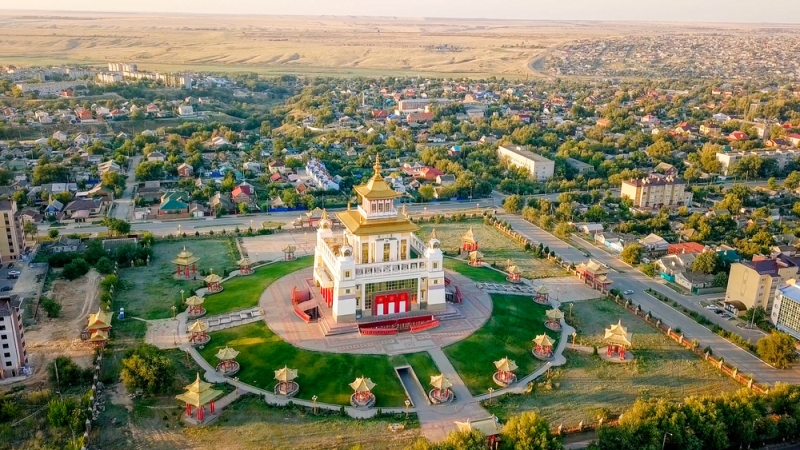
The fact that most Kalmyks practice Buddhism left a certain imprint on the architectural appearance of the cities of the republic. There are especially many colorful monuments, of course, in Elista. For example, several suburgans (monolithic ritual structures): Stupa of Reconciliation, Stupa of Enlightenment, Pagoda of the Seven Days. At the entrance to the Druzhba park you can see the Golden Gate “Altn Bosch” with illustrations dedicated to the past and present life of the Kalmyk people. All these unusual buildings resemble either Tibet, or Indonesia, or China – it all depends on the strength of your imagination and tourist experience. Believe me, pictures of these attractions will definitely not go unnoticed on your Instagram!
But the residential areas of the capital of the republic closer to Chess City (the area built for the XXXIII Chess Olympiad in 1998) are similar to the streets of Uzbekistan: the houses are protected from the scorching heat and steppe dust by special carved panels.
3. Try a very specific kitchen
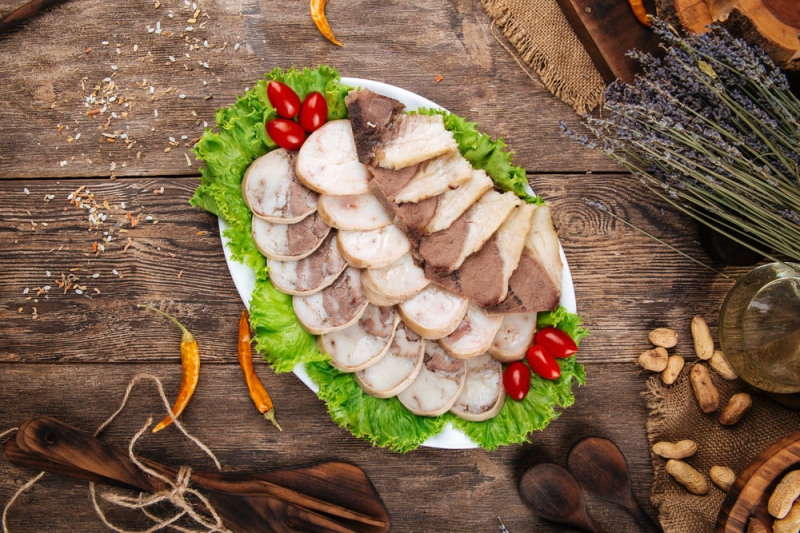
Kalmyk cuisine can shock even residents of nearby regions, although it would seem to be the neighbors. Tea with butter, soup with entrails and a stomach baked in the ground – it doesn’t sound very appetizing, but in fact it’s really tasty! So, the main dishes of Kalmyk cuisine:
· Dotur is a soup made from thick broth, lamb offal (liver, tripe, kidneys) with the addition of lard and blood. Served with raw onion chopped directly onto the plate.
· Makhan sheltyagan is another first course, a soup with chopped pieces of lamb breast and whole potatoes. And with onions, of course. Among the Mongolian peoples, it is believed that makhan is a medicinal dish that can overcome heartburn and difficulties in sexual life.
· Segserdyk – boiled lamb on the bone with homemade dough (the dish is vaguely similar to the Dagestan khinkal).
· Semjin – lamb liver fried in a mesh of lamb fat.
· Bortsoki are flat cakes fried in boiling oil. The taste is something between donuts and brushwood. Kalmyks usually eat it with soups instead of bread.
· Kur is an ancient dish of Kalmyk shepherds, which today is prepared on the occasion of a major holiday. The ram meat is cut, placed in a mutton stomach, which is then sewn up. Then the stomach, along with its contents, is placed in a hole dug in the ground, covered with ash and coals, and with earth on top. There the meat languishes for about 10-20 hours.
· Horse meat is a popular meat among Kalmyks. In local supermarkets you can easily find dried and dried meat, kazy sausage and the freshest tenderloin. By the way, travelers in Kalmykia often manage to try camel meat!
· Dairy products: mare’s milk kumis, chigyan (something between kefir and yogurt), sala syuyuryumg (dry cottage cheese) and khursan (dried cottage cheese cakes).
· Dzhomba – Kalmyk tea. Not everyone likes it, but if they do, they usually fall in love with it once and for all, buying the bar tea as a souvenir. The national drink is prepared from this same slab tea, milk or cream, butter, salt, nutmeg and bay leaf. Jomba quenches thirst in hot weather and warms in cold weather.
4.Learn the history of the Kalmyks
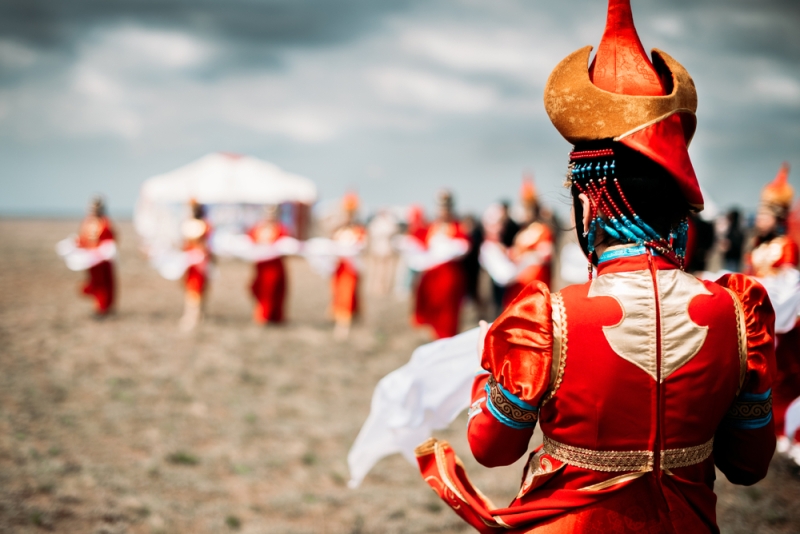
The history of the Kalmyk people is full of dramatic turns, and a good guide will tell you it without school academicism. Initially, Kalmyks were nomads, Mongols, who migrated to the Caspian lands from Central Asia. If the Kalmyks had good relations with the Don Cossacks, they periodically conflicted with the tsarist authorities. But in Soviet times, in 1943, all Kalmyks from local lands were forcibly deported to Siberia and the Far North. The deportation was carried out in terrible conditions: many died on the road. Largely because of this event, the people remained so small in number.
The Elista monument “Exodus and Return” is dedicated to the deportation of the Kalmyks. The work by sculptor Ernst Neizvestny was cast in New York and presented to the Kalmyk people in 1996. This memorial is full of symbols and allusions: it is interesting to look at it, but at the same time it is difficult, because the work personifies suffering.
By the way, “Exodus and Return” is not the only sculpture in Elista directly related to the history and culture of the Kalmyks. For example, in the Druzhba park you can see a monument dedicated to the storyteller Eelyan Ovla, glorifying the epic “Dzhangar” – the favorite national work of the Kalmyks. And at the entrance to the city, an impressive “Golden Horseman” was installed, dedicated to the main character of this work.
5. Visit the steppe
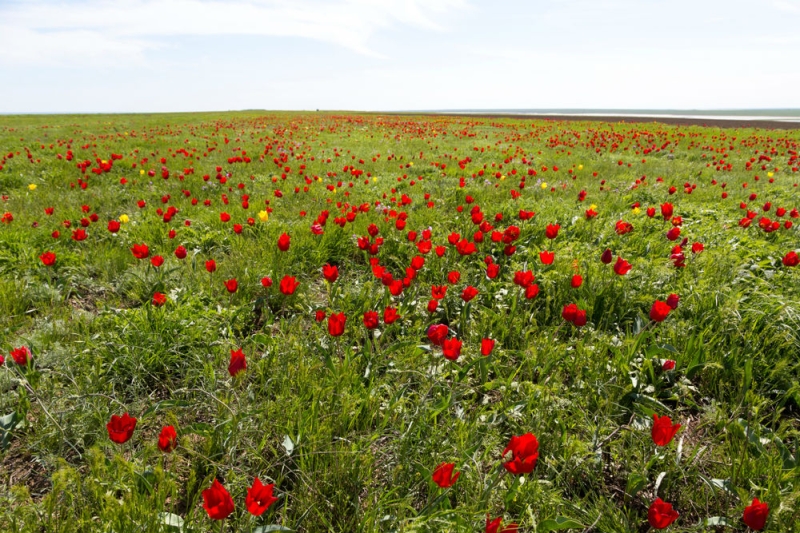
A resident of Central Russia may well find the steppe exotic, and one should not think that it is just scorched land stretching for hundreds of kilometers. Kalmykia has its own hot springs (for example, in the village of Khar Buluk or near the village of Adyk), the salt lake Manych-Gudilo with nesting pink pelicans, and the lake with healing properties Bolshoye Yashaltinskoye, known for its extraordinary mineral composition. The Kalmyk steppe itself is especially beautiful in the spring, in April: at this time it is covered with a green carpet of fragrant herbs and bright tulips. Be sure to visit the Khanata and Black Lands reserves: camels roam freely, saigas and herds of wild horses graze there.
Text author: Margarita Paimakova

